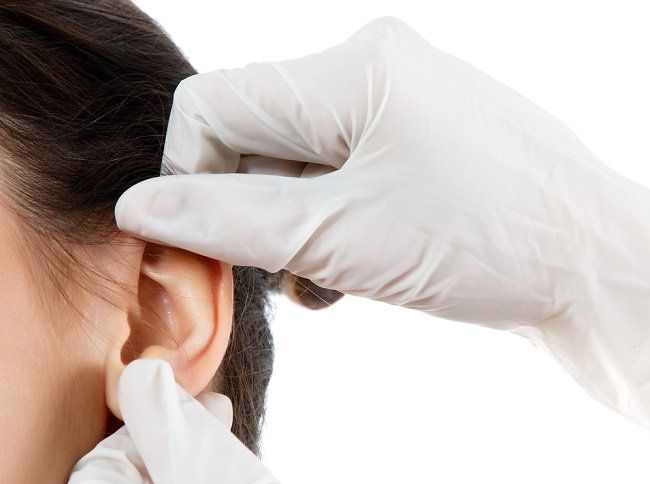The cause of the appearance of an allergic skin reaction can be identified by undergoing a skin allergy examination. This examination consists of a skin prick test, a patch test, and a skin injection test. This test is important to do to find out the cause of the allergy so that the treatment and prevention of allergies can be carried out effectively.
Skin allergy is one of the most common skin disorders, both in adults and children. The appearance of skin allergies is generally characterized by itching and rashes appear on certain body parts.

If the allergic reaction that appears is severe enough, skin allergies can appear along with other complaints, such as runny nose, sneezing, watery eyes, nausea, vomiting, diarrhea, swelling of the lips, to fainting and shortness of breath due to anaphylaxis.
Allergic skin reactions can occur when people who have allergic diseases come into contact with allergens (allergens), such as dust, soap or detergent, perfume, mites, metal, or animal dander.
In certain cases, allergic skin reactions can also appear due to consumption of certain foods or drinks, side effects of drugs, or changes in weather, such as cold or hot air.
Knowing the Cause of Skin Allergies with Allergy Tests
You can undergo allergy tests to the doctor to determine the cause of the appearance of allergy symptoms or the trigger of the skin allergy that you are experiencing.
While undergoing a skin allergy test, your doctor will perform a physical examination and advise you to stop taking medications, such as antihistamines and corticosteroids, if you are taking them.
Some allergy tests take a short time (about 20 – 40 minutes), but some take longer, up to a few days. The following are some types of skin allergy tests that can be done:
Skin prick test
This skin allergy test is done by a doctor by attaching a substance or object suspected of being an allergy trigger on a small needle, then the needle is inserted into your skin. After that, the doctor will wait for about 15-20 minutes to see if there is an allergic reaction or not.
The skin prick test is usually painless. In adults, the skin prick test is performed on the forearm, while in children it is on the upper back.
The skin prick test is negative if you do not feel any symptoms after the skin has been exposed to the allergen. However, if you experience itching, a rash, or rashes appear on the skin where the puncture site is located, then you most likely have an allergy to the substance being tested.
Patch test
This skin allergy test is done by attaching a patch that has been given an allergen substance on your arm or back and left for about 48 hours. During that time the patch is attached. You are advised not to sweat a lot or to be careful when bathing so as not to wet the skin where the patch is attached.
After 48 hours, the patch will be removed and the doctor will evaluate the area of skin where the patch was attached the next day. If you feel itching or rashes and bumps appear on your back or arms, then you most likely have an allergic reaction to the substance that is attached.
Skin injection test
This allergy test is at first glance similar to a skin prick test, but the difference is in the way it is injected. The skin injection test is done by injecting a liquid containing a substance suspected of triggering an allergy into the skin on the arm. Then the doctor will wait about 20 minutes to see if you have an allergic reaction.
A skin injection test is often done to assess if you have an allergic reaction to medications, such as injectable antibiotics.
Dealing with Skin Allergies and How to Relieve the Symptoms
Treatment of skin allergies in each person is different, depending on the results of the skin allergy test that is undertaken. If you often experience symptoms of skin allergies, you should consult the problem to a doctor so that it can be treated appropriately.
To relieve the symptoms of a skin allergy and prevent it from getting worse, you can take the following steps:
1. Avoid scratching
Itching due to allergies can be very annoying. However, when you feel itchy, avoid scratching the skin because it can make the skin more irritated and injured. Frequent scratching of itchy skin due to allergies can also make the skin infected and hinder the healing process.
2. Give a cold compress to the skin
To relieve itching and rashes that appear due to skin allergies, you can compress the skin with a towel soaked in cold water or wrapped in ice for a few minutes. After the skin is compressed, dry it and apply a moisturizer to the skin to relieve irritation and prevent dry skin.
3. Use drugs
To treat itching and allergic reactions, you can use antihistamine drugs and corticosteroids prescribed by a doctor. In addition, the doctor may also advise you to use whipped powder calamine to relieve itching and irritation of the skin.
4. Avoid contact with allergy triggers
When exposed to allergies, as much as possible avoid contact with allergy triggers so that allergic reactions on the skin do not get worse.
When the allergic reaction subsides, you also need to always remember what allergy triggers you feel and as much as possible avoid contact with those allergy triggers.
The appearance of allergy symptoms in each patient with skin allergies is different. There are those who rarely feel the symptoms of skin allergies, but there are those whose symptoms appear quite often and interfere with daily activities.
If you experience skin allergies quite often, but don't know what triggers the allergy, you should consult a dermatologist to undergo allergy testing and get the right treatment.









